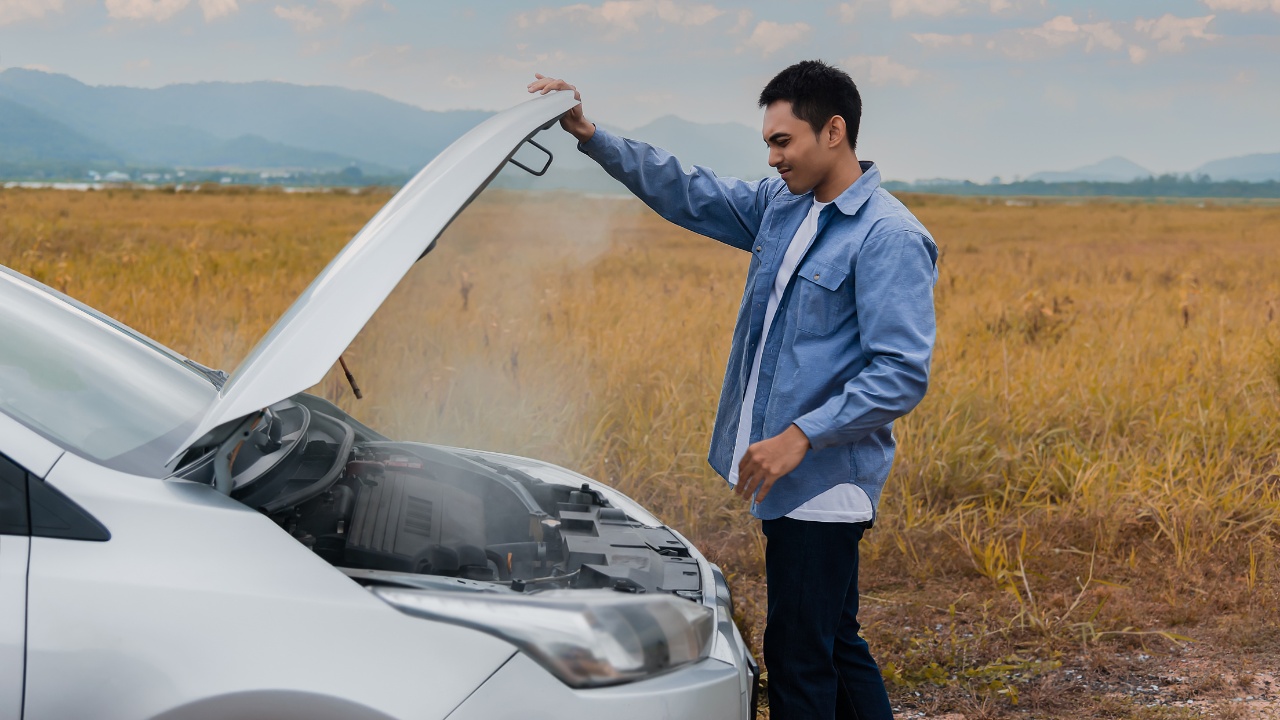If Your Old Car Has Any of These 13 Problems, It’s Time To Buy a New Vehicle

Do you wish to drive your car forever? You’re not the only one who feels that way. The truth is keeping an older car can test your patience and balance sheet. You can try and squeeze the last possible mile out of the trusty machine, but it will eventually tire you out with the constant repairs and other inconveniences associated with keeping them on the road.
Many are guilty of attaching such sentimental value to their rides that they don’t ever want to see them retired. Unfortunately, even the most reliable models are still machines with a lifespan. They might keep grinding for as long as you make them, but the quality of their health is never the same.
There comes a point in a car’s service life when it’s just about time for retirement. The signs will be there, and chances are you already know those twilight telltales. We intend to remind you of those signs so you can’t pretend not to know what they mean. Here are 13 signs it’s time to get a new car.
Persistent Engine Knocking

Far too many of us are familiar with knocking or pinging sounds from a hurting engine. It’s a sign of serious internal engine damage, perhaps piston problems, worn bearings, or both. The “pinging” is because fuel burns unevenly in the engine’s cylinders.
We know our cars are aged and can’t take whatever is causing the knocking for long, so we’re quick to intervene as soon as we perceive the knocking sound. If left “untreated,” you risk damage to the pistons and cylinder walls.
The takeaway here is the “uneven” fuel burning. The knocking sound is a sad telltale of inefficient combustion, which means reduced engine performance and fuel efficiency.
Excessive Exhaust Smoke

Too much smoke from the tailpipe might be your car telling you to start prepping for a replacement. Depending on the color and amount of smoke, you could be dealing with serious engine problems.
Mechanics have identified three colors: White, black, and blue, each with different implications, none of which is good news when there’s too much.
Excessive white smoke means coolant leak or burn, indicating you have a cracked engine block, blown head gasket, or a damaged cylinder head. White means burning oil, in which case you probably have worn valve seals or piston rings. Black means excessive fuel burning, in which case you have malfunctioning fuel injectors, a bad fuel pressure regulator, or a faulty sensor.
Transmission Slipping

Transmission slipping is a problem car owners often complain bitterly about. Discerning car shoppers generally give the 2nd-gen Nissan Murano a wide berth because of this singular issue. We bet you don’t need a soothsayer to know you need an upgrade if you have the 2015 Murano.
CoPilot notes that 2015 is “the worst year for Nissan Murano transmission problems… resulting in unfortunate costs and multiple visits to the mechanic.” No matter the make and model, slips, hesitations, or erratic shifting are all dangerous signs of a failing transmission and typically costly repairs. If this is a persistent problem, you need a new car.
Chronic Overheating

This is probably the most obvious sign of a need for rest. In human beings, we call it a fever, and it is often a sign of an underlying illness. It’s the same with cars. Occasional, temporary overheating due to identifiable reasons, such as prolonged idling in traffic, driving uphill, towing, or running the air conditioning, is normal.
However, frequent overheating might be telling you something is wrong with the cooling system, from a failing water pump to a blown gasket to radiator issues.
You’re better off upgrading to a new car if you keep fixing the cooling system and your car keeps overheating. Don’t wait until chronic overheating takes a hammer to the car’s value by causing severe damage to the engine block, cylinder heads, or head gaskets.
Persistent Oil Leaks

One of the first places discerning auto shoppers look at when buying a used car is underneath the vehicle. You guessed it; they’re looking for signs of leaks. If that’s you, check the areas around the gaskets, seals, and hoses under the hood if you can’t spot puddles of oil under the car.
Smoke emanating from the hood during a test drive can also indicate oil dripping on exhaust components.
In any case, oil leaks can severely impact a car’s value because chronic low oil levels put the engine at risk of severe damage. You can’t rely on a car with this problem unless you’ve become accustomed to frequent repairs and breakdowns.
Loud Exhaust Noises

Gearheads treasure exhaust notes that literally sing the praise of the engine’s remarkable technology and performance. However, there’s a huge difference between these soundtracks and louder-than-normal exhaust noises; neither you nor the neighbors enjoy them.
If there’s supposed to be a catalytic converter, muffler, and exhaust manifold present, then you should be worried about loud noises because it means one or more of those components are broken. The worst part is that these components are typically expensive to replace or fix, especially in older cars. Speaking of neighbors, don’t wait until they sue you for $15,000 because your BMW is too loud.
Poor Steering Response

This one is as dangerous as slipping transmissions. If you experience an unusually difficult or loose steering wheel, you might be dealing with power steering system issues or problems along the suspension system. The specifics are typically failing tie rods, steering racks, bushings, or ball joints.
These cost a pretty penny to fix or replace, and if left untreated, can easily spill over to alignment problems and hydraulic system issues. In our book, poor steering response is a critical sign that it’s about time you got a new car.
Any problem that takes control out of your hands exposes you to accidents. God forbid you drive with a loose or overly tight steering wheel in adverse weather conditions.
Braking Issues

It usually starts with squealing or grinding noises, quickly followed by reduced braking efficiency. It’s a sign of worn rotors, brake pads, or some other problems in the braking system that might be critical to your safety. You don’t want to drive a car with compromised braking performance if the problem is ongoing.
The problem is besides the cost of fixing or replacing components like the master cylinder, brake pads, calipers, and rotors. Yes, these are typically expensive, especially in older cars, but the worst part is the high chance of underlying problems. Sometimes, brake issues are telltales of deeper, more systemic issues affecting the ABS or hydraulic lines.
Frequent Stalling

That’s akin to a car telling you it’s too tired to keep going. Balaam faced a similar situation and thought he could beat his ride into submission. It didn’t work. His donkey stalled because an angel stood in its way.
A stalling car is usually due to something less preternatural, particularly fuel system issues, ignition problems, or a failing engine. You should be concerned enough to change cars if this happens frequently. That wouldn’t have helped Balaam, but it will save you from a car that stalls unexpectedly in intersections or on highways.
Vibrations or Shaking

Unusual vibrations when you’re driving are telltales of problems with the tires, suspension, or drivetrain. It’s time to look for another ride if this problem doesn’t seem to go away despite your efforts.
Speaking of which, diagnosing and fixing the underlying causes of vibrations can set you back a pretty penny, particularly if you have to replace multiple components or the problem is connected to critical systems like the transmission or engine mounts.
The shaking affects not just the car’s stability but the road manners, too. Even if you decide you can live with the impaired handling, you may not be able to live with the potential for further damage to other vehicle components.
Unusual Noises

The average Joe can tell the problematic sounds from the ones associated with the normal operation of a vehicle, such as the mirrors whistling in the highway wind or the tires humming. These are different from the strange noises that may not even wait for you to accelerate before they come on.
Only if the problem begins and ends with a clunking, rattling, or squeaking nuisance. Unfortunately, you could never have peace of mind with persistent strange noises from the engine bay, suspension, or undercarriage as constant reminders of mechanical issues.
Suspension Problems

You know the suspension system is tired when your trusty car starts to bounce a little too much after hitting bumps or leans a little more scarily when making turns. Not that any of the numbers we’ve raised here are negligible, but a faulty suspension spells a unique level of seriousness.
It compromises a lot at a go — your car’s stability, handling, steering, wheel alignment, tire health, and ride quality.
You run a high risk of accidents with a compromised suspension, especially when you make sudden maneuvers or drive on uneven terrain. You’re better off with a new car if the cost-benefit analysis of fixing the problem isn’t in your favor.
High Repair Costs

Two cars can have the same problems but require a significantly varying repair cost. Cars typically need the doctor more frequently as they age, at which point it starts to make little to no difference how much it costs to fix the problems.
Frequent repairs, no matter how cheap, add up, especially now that the car is old and typically requires multiple components fixed or replaced at a time. It’s time to get a new one when the cost of repairs starts to exceed the car’s value.





